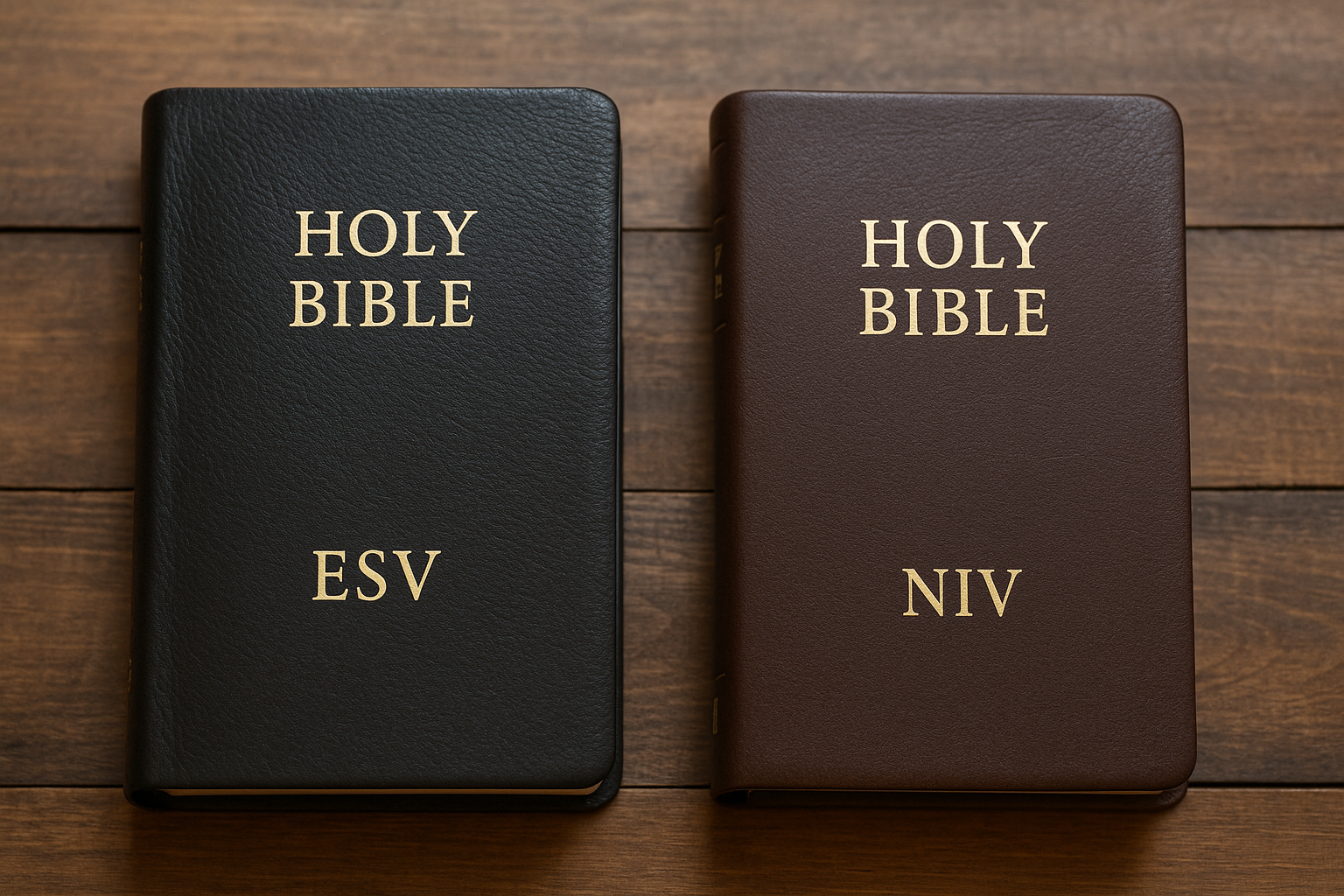Few questions divide Bible readers quite like the choice between the English Standard Version (ESV) and the New International Version (NIV). Both are among the most widely read translations in the English-speaking world. Both are faithful to the Word of God. Yet each carries a different philosophy, a different style, and a different reputation among churches. For the believer who has not read much of the Bible, choosing between them may feel like choosing sides in a debate. The truth, however, is that each has its own strengths. The real question is not which one is universally better, but which one will serve you best where you are right now.
The Character of the ESV
The ESV is a word-for-word translation. It aims to preserve the structure and vocabulary of the original languages as closely as possible while still being readable in English. This gives it a sense of formality and weight. Many churches that emphasize doctrinal precision use the ESV because they trust that the wording will not drift far from the text. For someone who wants to slow down, analyze, and study, the ESV is a faithful companion. It rewards patience. It often forces you to stop and think through what you have just read, and that reflection deepens your grasp of Scripture.
Yet the ESV is also demanding. Its sentences can feel heavy, and its vocabulary is not always accessible. It is written at about a tenth-grade level, which means that someone new to the Bible may find it hard to sustain regular reading. The accuracy is not in question, but the accessibility can be. For that reason, many beginners who start with the ESV eventually drift away, not because they lack desire, but because the style feels more like work than invitation.
The Character of the NIV
The NIV is a thought-for-thought translation. Its goal is not to preserve every structure exactly but to communicate meaning clearly in natural English. This makes it far more readable for most people. The flow of its sentences feels smooth. It reads easily aloud in groups. For those just beginning to engage with the Bible, the NIV offers an entry point that is clear without being simplistic.
The NIV is written at about a seventh-grade reading level, which means the majority of readers will grasp it without strain. It is not a paraphrase; it is a faithful translation. Yet in its pursuit of clarity, it sometimes makes interpretive decisions that a word-for-word translation leaves more open. That does not mean it is untrustworthy. It simply means that the NIV values accessibility, and in doing so it sacrifices some of the fine-grained detail that translations like the ESV preserve.
Weighing the Strengths and Weaknesses
When comparing the ESV and the NIV, the differences become clear. The ESV provides precision. It is well suited for those who want to dig deeply into each phrase and compare Scripture carefully. It has become a favorite of pastors, seminary students, and study groups that are focused on theology. The NIV provides clarity. It is designed to be read smoothly and understood without constant pause. It is widely used in churches that want the congregation, including children and new believers, to be able to follow along.
The weaknesses are the reverse of the strengths. The ESV, in its precision, can feel stiff. The NIV, in its clarity, can feel less exact. Neither is unfaithful, but each makes a trade. The ESV risks intimidating a beginner, while the NIV risks smoothing over some of the more difficult structures in Scripture.
The Practical Decision
So which is better for you? If you are just beginning to read the Bible, the NIV may be the wiser starting place. Its clarity will allow you to read more consistently without frustration. Once you have built the habit of daily reading, you can add the ESV as a study Bible. On the other hand, if you already have some familiarity with Scripture and want a translation that will push you to think carefully, the ESV may serve you best. It is not a question of which is superior in the abstract, but which one will keep you opening the Bible and hearing God’s Word.
Interested in other Bible Translations? Take our quiz to see which is best for you!
A Reminder of Gratitude
It is easy to treat this choice as if it were a competition. In truth, having the option to decide between the ESV and the NIV is a blessing many believers in the world do not share. In some countries, Christians risk their lives to obtain even a single copy of Scripture. Others have no translation in their language at all. To argue over which English Bible is better is, in some ways, to forget the privilege of having both. Hold whichever you choose with gratitude. Use it well. And remember that both the ESV and the NIV testify to the same Christ, the same Gospel, and the same God.
Conclusion
The question of ESV versus NIV does not have a simple answer. Both are faithful translations. Both will guide you into the truth. The ESV offers precision for study. The NIV offers clarity for daily reading. The best choice is the one that will keep you engaged with Scripture, because the most accurate translation in the world is useless if it remains closed on your shelf. Choose the one that invites you in, and begin reading today.

Leave a Reply